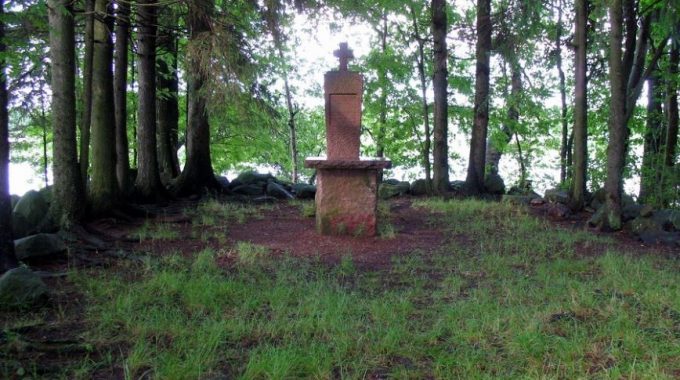
A European Journey #46 – Köyliö (Finland)
Finland is one of the richest nations in the world. And yet, as Indian philosopher Vishal Mangalwadi once noted, Finland has never been a colonial Empire. Neither can we attribute its prosperity to its natural resources… So what made this prosperity possible? A closer look into the past of this country will reveal the enormous influence that the Bible has had on this nation.
Since one episode won’t be enough to explain this, let’s start a new miniseries exploring some of the facts that gave Finland its soul.
During stage 23 in Turku, we already explored how Finland got its written language through Mikael Agricola, the Finnish reformer who studied at the feet of Martin Luther in Wittenberg. He created the Finnish alphabet and translated portions of the Bible. Obviously this had an enormous impact on the development of Finland.
Today, however, we will go 90 km north from Turku, to a village called Köyliö. Although it covers a territory of nearly 260 km2, the local population amounts to just over 2500 inhabitants. The precise location we will visit is actually an island on Lake Köyliö located 2 km east of the village. But to reach this island, we will need to travel 8 kmto a place called Kirkkoniemi (or Cape of the Church) on the eastern bank of the lake. From there we will cross the lake – by boat or even by foot in winter – to Kirkkokari, which simply means the Church Islet.
At first glance, this island is not any different to the nearly 180 000 islands of Finland; it is uninhabited and covered by fir trees. Nevertheless, as we set our feet on this island, we quickly realise that there is something particular here: a small table of marble and behind it a monument with a cross on top. We are, in fact, standing before the only Roman Catholic pilgrimage site in Finland.
So, why is there a Roman Catholic pilgrimage site in this predominantly Lutheran nation? And why are we here?
Well, this place is actually one of the best locations to explain how Christianity took root in Finland. For Lake Köyliö is supposedly where Saint Henry, the first bishop of Turku, was murdered.
The sources about his life are very few. One of them is an oral story probably dating back to some decades after his death. It was recorded in the 19th century by Elias Lönnrot in the famous Finnish national epic Kalevala.
Henry was probably born in England in the 12th century AD. He went to be a missionary in Sweden, where he became Bishop of Uppsala, the city where the king of Sweden resided. And in his days, the king was Eric, a Roman Catholic believer who later died as a martyr.
Eric aimed to evangelize the lands beyond the Baltic Sea, that is Finland. At the time, the Finnish tribes were among the last European peoples still to be pagan. The king commissioned Henry to evangelize and organise the Finnish church.
According to Kalevala, Henry arrived in the region of Köyliö and went to the estate of a man called Lalli. The latter being absent, Henry asked for hospitality from his wife. She agreed with the condition of receiving a payment for it. But when Lalli returned, his wife told him that Henry had forced her to receive him. Lalli believed his wife and murdered Henry. Another source explains that Henry was murdered because the Finnish pagan tribes wanted to resist the Christianization of their land.
So, whatever the truth is behind his murder, Henry’s death became pivotal for the development of Christianity in Finland, and through that, for the development of the Finnish nation.
Henry’s mission to Finland coincides roughly with the establishment of the Swedish rule in the land. His early death didn’t allow him to accomplish much in the country. However, after his death, Sweden helped establish several churches in the country, most notably the cathedral of Turku (or Åbo in Swedish), which was dedicated to Henry. The establishment of churches, in turn, became foundational for the organisation of Finnish society.
However, it would be a mistake to believe that Christianity arrived in Finland through Henry. It would also be an error to believe that Christianity was established here by force. In reality, the message of the Gospel seems to have come through a gradual and peaceful process. For instance, some Christian jewelry dating back to the 6th century AD were discovered in the country in recent years. Also, the contact of Finnish merchants with foreign Christians was a likely part of the process.
In conclusion, the murderous character of Lalli and the dishonesty of his wife would seem very un-Finnish nowadays. Their attitudes are in stark contrast with one of the highest values held by Finnish people, which is integrity. If Lalli and his wife represent the pagan past of Finland, then what has brought the change in the Finnish culture? The only plausible explanation is found in the teaching of the Bible to the nation. This book taught that it was wrong to kill, to steal or to lie. Today, the value of integrity is obviously seen in the low level of corruption in Finland, which is itself indispensable for economic success. But integrity is not to be taken for granted. It can only be maintained during the next centuries if it stays connected with its Biblical source.
See you next week somewhere else in Europe.
Cédric Placentino
Schuman Centre convener for Italian and French Europe
Follow A European Journey here.
Picture: Wikipedia – username: Joe K. – link to license: https://commons.wikimedia.org/wiki/Commons:GNU_Free_Documentation_License,_version_1.2

This Post Has 0 Comments